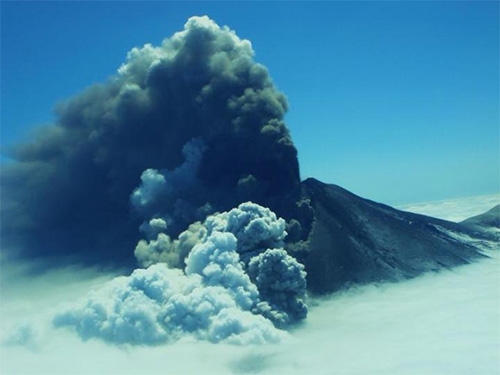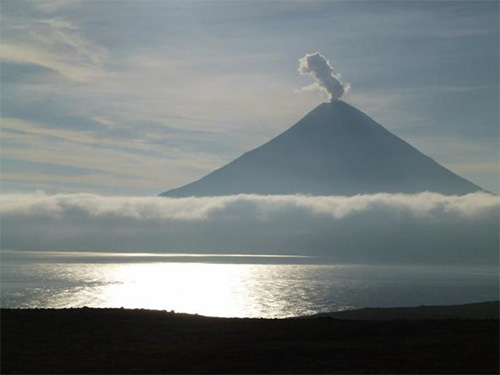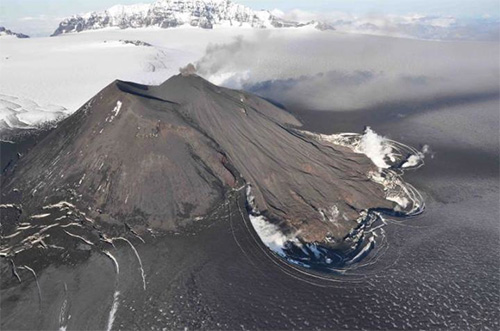
Alaska researchers improve their 'hearing' to detect volcanic eruptions
April 05, 2016
In a study published online in the Bulletin of the Seismological Society of America, David Fee of the Alaska Volcanic Observatory and Wilson Alaska Technical Center and his colleagues used these techniques to examine the ground-coupled airwaves produced by recent eruptions at Cleveland, Veniaminof and Pavlof volcanoes in Alaska.
Alaska's Pavlof volcano in 2013, with ash eruption plume and steam from melting snow and ice.
"We now use these techniques operationally at the Alaska Volcano Observatory and plan to integrate them more in the future," Fee added. Ground-coupled airwaves or GCAs occur when an acoustic wave in the atmosphere impacts the earth's surface, producing a ground wave that can be detected by seismometers. Volcanic explosions can produce these low-frequency acoustic waves, as well as events such as meteors entering the Earth's atmosphere, and even chemical or nuclear explosions. "Volcanic explosions can sometimes be difficult to detect seismically, but the GCA can provide unambiguous evidence that a volcano is erupting," said Fee. "We can also use GCA to locate eruptive vents and identify changes in eruption style."
Steam and gas plume rising from Alaska's Cleveland Volcano in 2014.
The researchers examined GCA signals from a May 2013 eruption on the Aleutian Arc's Cleveland volcano, one of the most active but also one of the most remote volcanoes monitored by the observatory. Typically, eruptions from the volcano are detected by satellite fly-overs. But Fee and colleagues show that the May 2013 eruption sequence could be detected--and distinguished from a non-volcanic acoustic signal--by remote seismic networks.
Aerial view of the active vent, erupting intracaldera cone, and new lava flows at Veniaminof Volcano in August 2013.
Fee said both GCA signals and regular seismic signals are important for getting a complete picture of how a volcano is behaving. "Infrasound and GCA signals are most effective at telling you what is going on at the volcano at that moment, whether it is erupting or not, and what kind and how much material is coming out of the vent," he said. "Seismic waves from volcanoes provide complementary information on what is going on in the subsurface and are often more effective at forecasting eruptions."
Edited by Mary Kauffman, SitNews
Source of News:
Representations of fact and opinions in comments posted below are solely those of the individual posters and do not represent the opinions of Sitnews.
|
||


